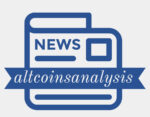SEC declares dollar-backed stablecoins like USDT and USDC are not securities, clarifying the crypto regulatory framework. Algorithmic stablecoins remain outside SEC’s recent clarifications, highlighting ongoing concerns about their regulatory status. The U.S. Securities and Exchange Commission (SEC) recently provided crucial guidance regarding the regulatory treatment of dollar-backed stablecoins, announcing that these financial instruments do not qualify as securities. Distinguishing Covered Stablecoins In a statement released on Friday, April 4, the SEC specified that stablecoins which are directly pegged to the U.S. dollar and backed by either the dollar itself or other low-risk, liquid assets do not fall under the category of securities. Notable examples include Tether’s USDT and Circle’s USDC. These “covered” stablecoins are primarily utilized for transactions, money transmission, and value storage, facilitating stability in digital commerce by maintaining a steady equivalence to the U.S. dollar. It is the Division’s view that the offer and sale of Covered Stablecoins, in the manner and under the circumstances described in this statement, do not involve the offer and sale of securities within the meaning of Section 2(a)(1) of the Securities Act of 1933 (the “Securities Act”) or Section 3(a)(10) of the Securities Exchange Act of 1934 (the “Exchange Act”). The SEC’s statement highlighted that the activities involving the creation and redemption of these stablecoins—commonly referred to as “minting” and redeeming—do not require registration of these transactions with the regulatory body. Exclusion and Concerns About Algorithmic Stablecoins However, the SEC’s announcement notably excluded algorithmic stablecoins, which do not rely on physical reserves but instead use software algorithms to maintain their value against the dollar. This omission is particularly glaring in the light of the dramatic failure of Terra’s UST in 2022, which led to substantial financial losses, underscoring the potential risks associated with these less regulated variants. The SEC’s position appears to align with forthcoming legislation, including the GENIUS stablecoin bill and the Stable Act of 2025 proposed in the U.S. Senate. These legislative efforts, spearheaded by U.S. Senator Bill Hagerty, aim to incorporate stablecoins under Federal Reserve regulations, thus securing the U.S. dollar’s dominance as the global reserve currency. These regulations are poised to fortify the financial architecture surrounding stablecoins, ensuring that large issuers maintain their reserves in regulated entities and short-term U.S. Treasury bills. As it stands, Tether’s USDT, the leading stablecoin by market capitalization, which currently exceeds $144 billion, underscores the significant scale and impact of these regulatory clarifications. The SEC’s recent clarification not only promotes a clearer regulatory but also potentially augments the in a formal or creative style, maintaining a 500 word count. You must only respond with the modified content. Change the tone of my title “SEC declares dollar-backed stablecoins like USDT and USDC are not securities, clarifying the crypto regulatory framework. Algorithmic stablecoins remain outside SEC’s recent clarifications, highlighting ongoing concerns about their regulatory status. The U.S. Securities and Exchange Commission (SEC) recently provided crucial guidance regarding the regulatory treatment of dollar-backed stablecoins, announcing that these financial instruments do not qualify as securities. Distinguishing Covered Stablecoins In a statement released on Friday, April 4, the SEC specified that stablecoins which are directly pegged to the U.S. dollar and backed by either the dollar itself or other low-risk, liquid assets do not fall under the category of securities. Notable examples include Tether’s USDT and Circle’s USDC. These “covered” stablecoins are primarily utilized for transactions, money transmission, and value storage, facilitating stability in digital commerce by maintaining a steady equivalence to the U.S. dollar. It is the Division’s view that the offer and sale of Covered Stablecoins, in the manner and under the circumstances described in this statement, do not involve the offer and sale of securities within the meaning of Section 2(a)(1) of the Securities Act of 1933 (the “Securities Act”) or Section 3(a)(10) of the Securities Exchange Act of 1934 (the “Exchange Act”). The SEC’s statement highlighted that the activities involving the creation and redemption of these stablecoins—commonly referred to as “minting” and redeeming—do not require registration of these transactions with the regulatory body. Exclusion and Concerns About Algorithmic Stablecoins However, the SEC’s announcement notably excluded algorithmic stablecoins, which do not rely on physical reserves but instead use software algorithms to maintain their value against the dollar. This omission is particularly glaring in the light of the dramatic failure of Terra’s UST in 2022, which led to substantial financial losses, underscoring the potential risks associated with these less regulated variants. The SEC’s position appears to align with forthcoming legislation, including the GENIUS stablecoin bill and the Stable Act of 2025 proposed in the U.S. Senate. These legislative efforts, spearheaded by U.S. Senator Bill Hagerty, aim to incorporate stablecoins under Federal Reserve regulations, thus securing the U.S. dollar’s dominance as the global reserve currency. These regulations are poised to fortify the financial architecture surrounding stablecoins, ensuring that large issuers maintain their reserves in regulated entities and short-term U.S. Treasury bills. As it stands, Tether’s USDT, the leading stablecoin by market capitalization, which currently exceeds $144 billion, underscores the significant scale and impact of these regulatory clarifications. The SEC’s recent clarification not only promotes a clearer regulatory but also potentially augments the ” for a more friendly approach. Keep the content length about the same. You must only respond with the modified content.




